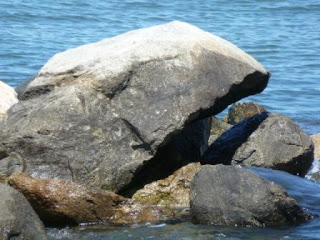What's gotten into me?
I mean, what's this with me and volunteering?
It's not as if I haven't volunteered before. But within the past two weeks, I've begun volunteering with two cycling organizations. And--quelle coincidence--it turns out that they're going to be working with each other.
I've mentioned my recent experiences with Recycle-A-Bicycle. I intend to continue working with them as my schedule allows. It looks like I'll be doing the same--and perhaps more--with a new organization called WE Bike.
I learned of them at the New Amsterdam Bicycle Show, where they had a booth. Liz, a bike mechanic and youth educator who started the organization only a couple of months ago was at the booth. And she was under the arches of Grand Army Plaza yesterday, where WE Bike was holding a repair workshop.
She immediately recognized me. I didn't think I was so memorable. Even more interestingly, she mentioned my blog and my Mercians. Hmm...It's not often that my reputation precedes me. Is that a good thing?
Anyway, I got there a bit late. But I went to work right away, showing a woman from the Caribbean island of Dominique how to fix a flat. She had just purchased her first bicycle, not long after learning how to ride a bicycle as an adult.
Yesterday, I thought she was mastering what I believe to be the first thing every cyclist should learn to do. But she apologized. For what?, I asked. Then I realized she was doing something I've seen many other women do--and which I've caught myself doing since I started to live as a woman: apologizing for no particular reason.
"You are officially in a guilt-free zone," I declared. "This circle around me"--I stretched my arms--"is off-limits for gratuitous guilt." At first, she didn't know what to make of what I said--or, I imagine, me. But then she giggled. "Don't worry," I said, "You'll be fine."
I was thinking about her as Liz and I talked after the workshop. We agreed that getting more women to ride, with other women, and learning how to fix their bikes from other women, could help some--especially the young--build their confidence. Plus, I added, it would help them become more independent.
Then I thought about my own experiences of working in bike shops. I don't recall seeing a female mechanic and, in those days, it seemed a lot of shops--including two in which I worked--had a "shop girl" who usually was a salesperson/cashier/hostess/Gal Friday. (I hope I don't seem sexist in using those terms: I can't think of any others that would accurately describe those roles.) In other shops--including one in which I worked-- such jobs, along with record-keeping and such, were done by the proprietor's wife.
In recounting those experiences for Liz, I fancied myself, for a moment, as a kind of Prometheus. Please indulge me if it seems a bit grandiose, but I realized that when I was showing two women how to remove bottom brackets and headsets, and how to true wheels, at Recycle-A-Bicycle, I was passing along knowledge that, in my day, was possessed almost entirely by males. And I probably wouldn't have learned those skills had I not spent the first four decades of my life as a male.
Or, perhaps--here comes the baggage of my Catholic education!--I am doing penance for all of those times I was one of those awful men who spoke condescendingly to female customers and who was less than helpful with girlfriends who actually wanted to ride bikes with me. If the work I am doing, and expect to do, is a penance, I suppose I'm lucky: There are definitely worse and more painful kinds of atonement!
Anyway...I have a feeling that interesting times are ahead for me.



































